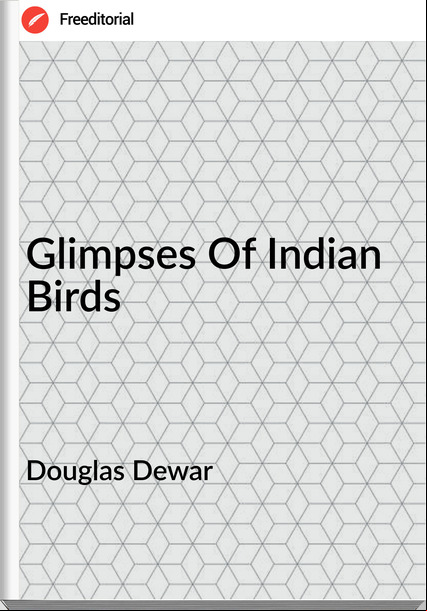Douglas Dewar

Glimpses Of Indian Birds
Sinopsis
The small groves that usually surround hamlets in Oudh are favourite
resorts of birds.
I know of few more pleasant ways of ing an hour than under the trees
in such a grove at the beginning of December, when the weather is perfect.
The number of birds that show themselves is truly astonishing.
Recently I tarried for a little time in such a grove consisting of half a dozen
mango trees, a tamarind and a pipal, and witnessed there a veritable avian
pageant—a pageant accompanied by music.
The sunbirds (Arachnechthra asiatica) were the leading minstrels. There
may have been a dozen of them in the little tope. To count them was
impossible, because sunbirds are never still for two s...

The Making Of Species
- English
- Science and Technology
- 19/07/14
Sinopsis
Pre-Darwinian Evolutionists—Causes which led to the speedy triumph of
the theory of Natural Selection—Nature of the opposition which Darwin
had to overcome—Post-Darwinian biology—Usually accepted
classification of present-day biologists as Neo-Lamarckians and Neo-
Darwinians is faulty—Biologists fall into three classes rather than two—
Neo-Lamarckism: its defects—Wallaceism: its defects—Neo-Darwinism
distinguished from Neo-Lamarckism and Wallaceism—Neo-Darwinism
realises the strength and weakness of the theory of Natural Selection,
recognises the complexity of the problems which biologists are
endeavouring to solve.
Darwinism and evolution are not interchangeable . On this ...

Jungle Folk
Sinopsis
Literary critics seem to be agreed that we who write about Indian birds
form a definite school. “Phil Robinson,” they say, “furnished, thirty years
ago, a charming model which all who have followed him in writing seem
compelled to copy more or less closely.” Mr. W. H. Hudson remarks: “We
grow used to look for funny books about animals from India, just as we
look for sentimental natural history books from America.”
In a sense this criticism is well founded. Popular books on Indian
ornithology resemble one another in that a ripple of humour runs through
each. But the critics err when they attempt to explain this similarity by
asserting that Anglo-Indian writers model themselves, co...

A Bird Calendar For Northern India
Sinopsis
Take nine-and-twenty sunny, bracing English May days, steal from March
as many still, starry nights, to these add two rainy mornings and evenings,
and the product will resemble a typical Indian January. This is the coolest
month in the year, a month when the climate is invigorating and the
sunshine temperate. But even in January the sun's rays have sufficient
power to cause the thermometer to 70° in the shade at noon, save
on an occasional cloudy day.
Sunset is marked by a sudden fall of temperature. The village smoke then
hangs a few feet above the earth like a blue-grey diaphanous cloud.
The cold increases throughout the hours of darkness. In the Punjab hoarfrosts
for...




